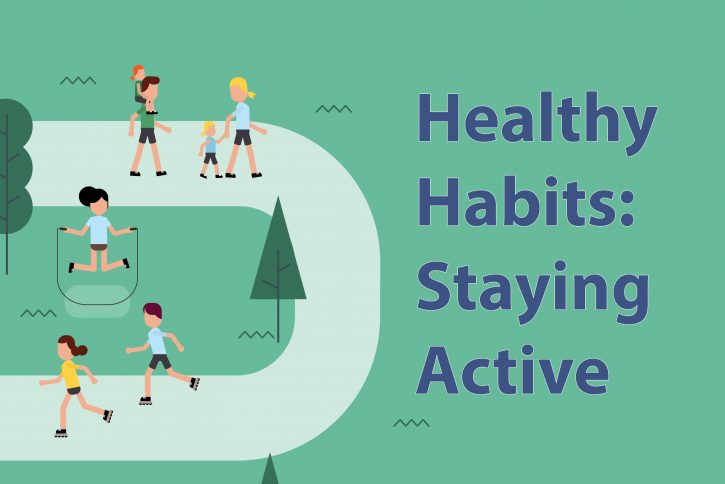
Article originally posted July, 2021.
We all know there are many benefits to being physically active. It can reduce your risk of disease; lower cholesterol, blood pressure and glucose levels; help maintain a healthy weight; improve your mood and even reduce stress and anxiety.
But even knowing all the benefits, it can still be difficult to get motivated to move. Sometimes just knowing where to start can make all the difference. Below we’ve provided a variety of physical activities for every fitness level to help you stay active.
Aerobic Activities
Aerobic (endurance or cardio) activities increase your heart rate consistently for a period of time. These types of exercises improve the health of your heart, lungs and circulatory system.
- Walking or jogging
- Biking
- Swimming or water aerobics
- Sports with constant movement, like tennis or basketball
- Dancing
- Yard work (mowing, raking, digging)
- Climbing stairs or hills
- Jumping rope
Work up to at least 150 minutes of moderate aerobic activity (makes you breathe hard) or 75 minutes of vigorous aerobic activity per week. Make sure you warm up and cool down before and after your endurance exercise, and drink plenty of liquids to stay hydrated.
Moderate versus vigorous intensity? In general, if you can easily hold a conversation while being active, it’s moderate-intensity activity. If you can only say a few words between breaths, it’s vigorous-intensity activity.
Strength and Resistance Exercises
These activities increase your strength and tone your muscles, which can help to improve balance and prevent falls and fall-related injuries.
- Weightlifting: weight machines, free weights or heavy household objects
- Resistance band exercises
- Carrying groceries
- Calisthenics: push-ups, pull-ups, squats, lunges
- Gripping a tennis ball
- Arm curls
- Abdominal muscles (core) exercises
- Wall push-ups
- Lifting your body weight
If you are starting a new fitness regimen, begin by doing the exercises with no weight or band, and then add the equipment as you get comfortable with the exercises. Once you can do two sets of 10-15 repetitions easily, move up to a heavier weight or band strength. Aim to exercise all of the major muscle groups (chest, back, arms and shoulders, abs, legs and glutes) at least two days per week.
Spend less time sitting. Get up once an hour to get your blood flowing and relieve muscle strain with some quick stretches or a short walk around your office or home.
Flexibility Activities
Increasing your flexibility can improve your balance and coordination. Many of these exercises can be performed while standing or while seated in a chair.
- Yoga
- Pilates
- Stretching
- Tai Chi
Flexibility exercises can be done daily to have the most impact on your flexibility.
Always talk to your healthcare provider before beginning a new fitness routine. They can help you to stay safe and minimize your risk of injury while meeting your fitness goals.
For more information on increasing your physical activity, contact Outpatient Therapy Services at 740-687-8602.
Sources: American Heart Association, National Institute on Aging